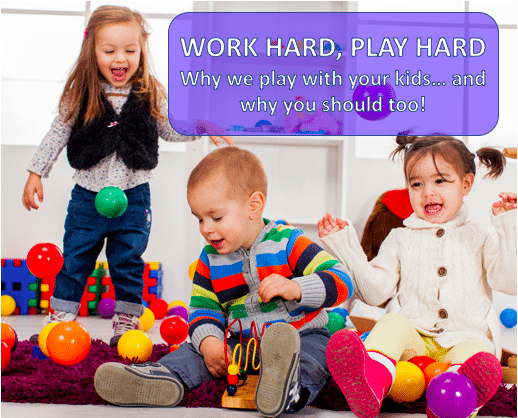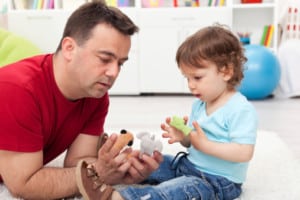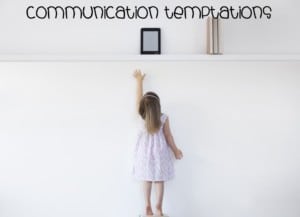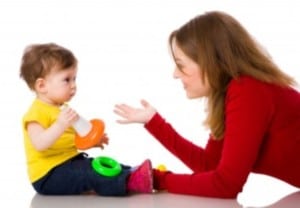This Scribble was scribbled by Krysta Leong Poi (Speech and Language Therapist at TCP)
One of the best parts about being a speech and language therapist is that I get to play… all day long! Of course, there are times when I’m sat a table with picture cards and worksheets but play is usually much more fun… and much more effective. I love planning and implementing play-based therapy. Not only is it fun and exciting but many areas within speech and language therapy can be worked on through play, regardless of your child’s age or his/her speech and language level.
Here are some reasons why play is important and how you can sharpen your play skills, making them more enriching and stimulating:
Play is intrinsically motivating to the child:
A child’s job is to play. It’s fun for them. Sometimes, we’re asking children to do difficult things. For the child that can’t quite figure out how to produce the /k/ or /s/ sound clearly, or the child that is confusing the pronouns “he” and “she” – it’s very hard work! Integrating our targets through play is a highly effective way of ‘masking’ the hard work of therapy. It works better for us as well because we are more likely to maintain a child’s interest and attention, which will impact on their learning during a session.
What you can do: Get rid of the table! Take the toys to the floor, spread all them out and observe, watch and listen – what toy does your child reach for first? What does he/she do with it? How can you intrude in his/her play and be a part of it? Ask your SLT how you can incorporate your child’s targets into play with him/her if he/she is receiving therapy.
Play gives opportunities to hear and use language:
Simple toys such as a Jack-in-the-box or a wind-up toy are difficult for little hands to manipulate. This gives us an opportunity to wait for the child to ask for help (request). If we’re playing with bubbles and we’re building up anticipation of blowing bubbles by saying ‘ready steady…’, we can start to work on early speech and language through your child completing the anticipatory phrase (go!). Soon enough, they may start saying it on their own. Then, we can also model and expand sentence structures for children. We can correct their syntactic errors (‘he didn’t falled down, he FELL down!’) recast what they’ve said but add on some extra vocabulary (‘yes, it’s a BIG BLUE car!’) or interpret their requests or comments (‘mummy can I have the biscuit please?’).
What you can do: Set up communication temptations whilst playing to create opportunities for language use. You can read more about these in our blog post written by our fantastic SLT, Trisha, here. Try to interpret for your child (say what is an expected response in the situation and model novel vocabulary for them, building on their used sentence structures).
Play allows children to build on social skills and use their imagination:
Play routines encourage children to be creative, to explore and interact with their world. They act out play sequences (feeding the doll, bathing the doll then putting it to bed) through which they can experiment with different social and emotional roles. They learn turn-taking, sharing, cooperation, perspective-taking, empathy and problem-solving. They learn to imagine and pretend, such as using a piece of paper as a rocket or a round pillow as a pizza. These are all important skills to build on their social, emotional and cognitive development.
What you can do: Don’t throw everything away! Old boxes, clothes, shoes, cooking utensils, pieces of cloth may seem like junk but you’d be surprised how much children love playing with them and how many creative things you can do with them!
Play builds on imitation:
A key component in play is looking at others and copying them. Children do it all the time with adults and with peers – they look at what the other person is doing and then try it out themselves. We’ve all seen a little baby clapping their hands or copying silly faces. Gross motor imitation starts through copying simple motor actions such as these and is actually a prerequisite to later language development.
What you can do: Be a good example! Sit face to face whilst playing and make sure that your child has a good view of you. Sing nursery rhymes with actions and get him/her to copy you. For older children, model play sequences and once your child is copying you, you can add on new elements!
Play enhances physical and sensory development:
Play has a big physical benefit as well, as it often involves being active and moving our bodies. Gross motor skills can be developed through play, such as jumping, running, skipping, whilst pretending to be superheroes. Fine motor skills are part of it too, through activities such as putting on tiny clothes on dolls or counting pretend money to pay for shopping. Little hands can explore different textures of items – gooey, slimy, smooth or soft.
What you can do: Go outside – don’t be afraid of some rough and tumble play and getting messy! Being outdoors is a great place for children to have some fun whilst exploring their senses.
Finally, play allows parents to bond with their children:
When I was a little girl, my mum would play shopping with me. We would pretend to go to a shop, I would be the lady working at the till and she would be the customer. To this day, I still cherish this memory (and I still love shopping!). I had so much fun playing with my mum. Spending that time with your child, letting him/her take the lead, exploring his/her interests, laughing and being silly together allows the formation of special bonds between you and your child – it creates a positive socio-emotional impact.
What you can do: Set aside ‘special time’ every day with no distractions (no phone calls, texts, or telly on!) Allocate a few minutes of your day to playing with your child and have fun!
Sources:
http://ipaworld.org/childs-right-to-play/the-childs-right-to-play/
http://pediatrics.aappublications.org/content/119/1/182.short
https://eric.ed.gov/?id=EJ738494
https://www.nhs.uk/conditions/pregnancy-and-baby/why-play-is-important/?








Leave A Comment